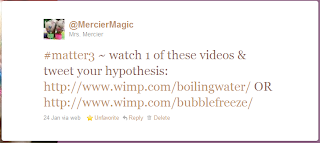Note-Taking
Over the last three months I've had three very separate, but similar, conversations about note-taking. Seeing as how the rule of three happens to be in play here, I have to write about it.
A common misconception is that copying from the board is note taking. Well, copying from the board is just that, copying from the board. For a child to take notes s/he is required to read, watch, and/or listen and then determine what is important to remember. Once importance is determined they jot it down in a notebook. This doesn't magically happen though. A lot of skills need to be taught in order for children to take notes well.
When reading to take notes, they need to understand the purpose of different non-fiction text features. Features like titles and subtitles will help them determine what they are reading about and pick out important details to support that topic. Features like pictures, diagrams, and charts help provide additional information on a topic. These are important for them to understand as well because sometimes these features can support the topic, and other times they provide extraneous (unimportant) information. In addition, features like these serve as a great model for representing information visually. They can ask themselves if it would be better for them to write it or draw it.
When watching video to take notes, many of the same features are used. There can be some slight differences. Where as in a text titles and subtitles point out the topic, in video often times it is the narrator losing a question or declaring a statement that signals the topic. It is then what the interviewees, photography, or diagrams provide serves as the supporting details. Just like informational texts, video can provide extraneous information, but in a much more subtle way. In informational texts extraneous info is often located off to the side and is called a sidebar. In video you have to watch and listen carefully to determine the sidebars, but allows children to ask questions such as:
- Is this related to the topic?
- Is this a fact or opinion?
- If this is related to the topic, is it important to know or just interesting?
Using video can help bridge note-taking skills from text notes to lecture notes. When listening to a podcast, interview, or lecture children need to be able to take in information and determine what the topic is and the details that support that topic, they also need to be able to determine how to capture that information, linguistically or visually. If a lecture is something that needs to occur, and if note taking from lecture is something the students need to do, then there are things you can do to help them be successful with this.
- State the learning objective/goal or ask an essential question.
- Give information in small chunks, similarly to how it's given in an informational text (usually separated by a new subtitle or paragraph) or video (usually broken up by commercials).
- After providing some info, have them talk to a partner to determine the important details.
- Have them picture what the information may look like and then create a diagram for it. (Then explain their diagram with a partner to clarify misconceptions.)
- Have them compare the information to something else they are familiar with, draw it, and then share it to clarify misconceptions.
- Use materials during the lecture to demonstrate what the information looks like. If they use the materials, remember to help them process what they did so they can connect it to the topic.
- Whenever possible, have them act out their learning. This can help them visualize the topic, make connections, and strengthen their ability to synthesize.
Remember to model what note taking looks like, and create anchor charts for them to refer to. Doing a variety of these things will help children become independent in note-taking. Over time you will have to scaffold the process less. Over time they will be able to attend to lectures for longer periods of time. Just remember to use lecture sparingly. It is important that children activley engage in the learning process, and that lecture is a more passive form of engagement.

Comments
Post a Comment